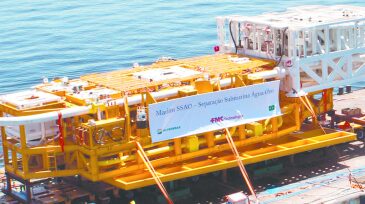heavy oil
-
Work conducted in the Surmont field of Alberta, Canada, provided an excellent starting point to optimize flow-control improvements to the SAGD process.
-
The growing amount of heavy crude processed worldwide has created additional separation challenges, leading some operators to turn to alternative technologies. In some cases, electrocoalescence has been an effective tool to separate oil from water.
-
As the world's supply of crude becomes heavier, many of the world’s oil producers will have to think more carefully about heavy crudes and the challenges they pose for processing, storage, and transportation.
-
The steam-assisted-gravity-drainage (SAGD) process along with an efficient steam-use process can reduce production costs and increase the oil-recovery rate. The use of real-time downhole monitoring is an effective approach to achieve this optimization.
-
At the end of the day, when you are working with heavy oil, the question is how to design your system, including both the layout and the functional aspects of various equipment.
-
Physical properties of crude oil, such as gravity, viscosity, and water density, drive the selection of technologies to be used for effective dehydration. For heavy crude oils, process temperature is often increased to lower viscosity, but there are limits, after which alternatives are needed.
-
The OTC 2012 Spotlight on Technology awards highlighted subsea separation and boosting and subsea heavy oil and water separation technologies in deep water.
-
Shell’s Parque das Conchas project, an ultradeepwater heavy-oil development in the northern Campos basin offshore Brazil, has won the IPTC Excellence in Project Integration Award. The award recognizes significant and unique achievements in managing and directing a project from discovery to delivery.
Page 11 of 11








